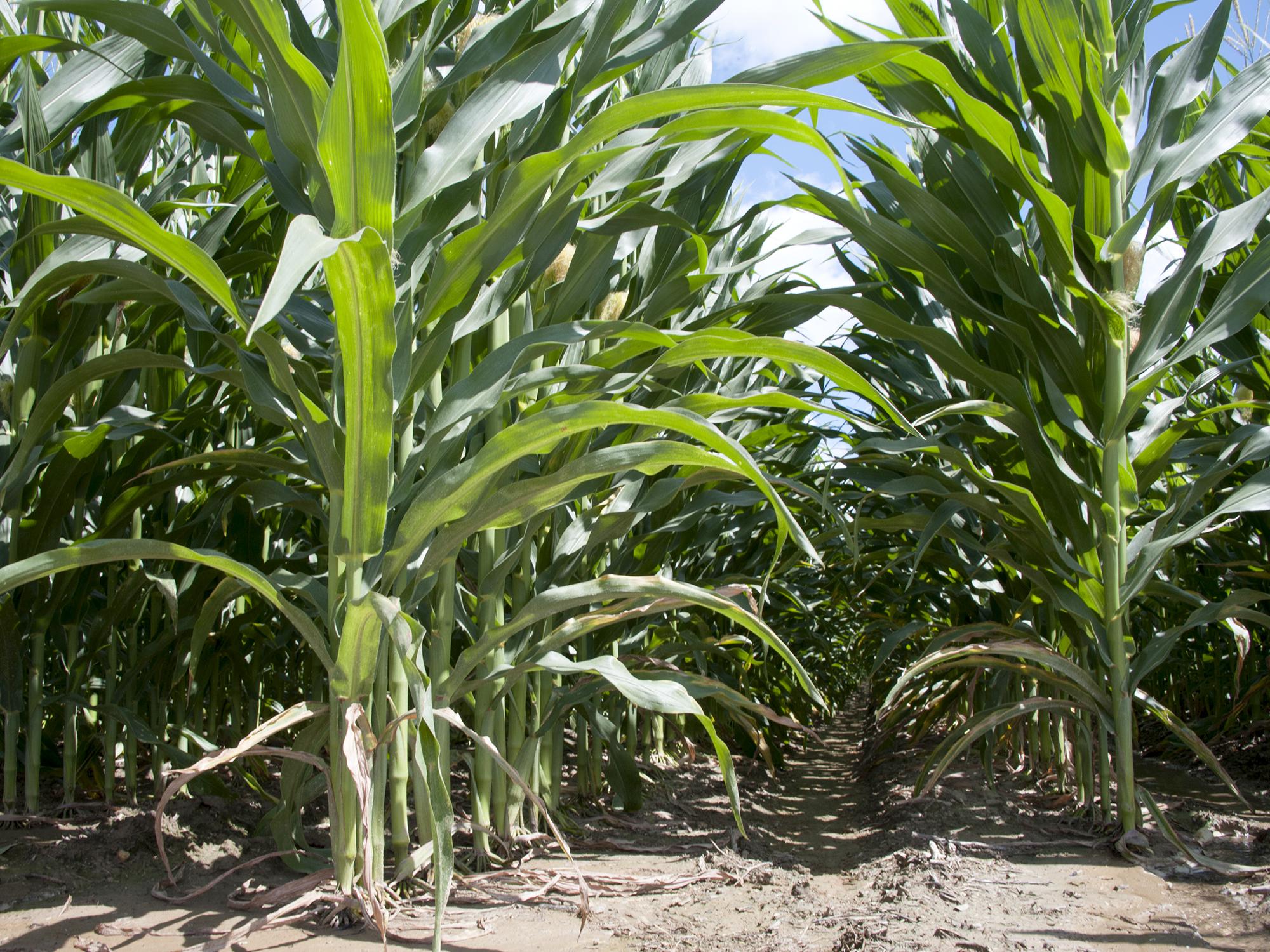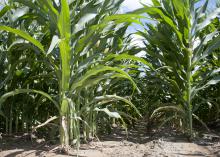Information Possibly Outdated
The information presented on this page was originally released on July 24, 2015. It may not be outdated, but please search our site for more current information. If you plan to quote or reference this information in a publication, please check with the Extension specialist or author before proceeding.
Heat not helping state's corn crop
STARKVILLE, Miss. -- Wet spring weather prevented Mississippi farmers from planting as many corn acres as they intended, but despite the heat, the crop is mostly looking good in fields across the state.
“We should have a good crop this year, but it won’t be a record,” said Erick Larson, Mississippi State University Extension Service corn specialist. “The planted acreage is down from what was intended because it was terribly rainy during spring planting, which delayed planting and restricted corn acreage.”
The U.S. Department of Agriculture estimates that 70 percent of the state’s overall corn crop is in good or excellent condition. One-quarter of the crop is estimated in fair condition, while 5 percent is rated as very poor or poor.
“The primary issues we’ve had recently are the heat and a lack of rainfall,” Larson said. “Nighttime temperatures have been 2 degrees hotter than normal, with night temperatures 75 degrees or higher for the last two weeks.”
Larson said this summer has been the fourth warmest in the last 20 years. The only hotter years in that period were 1998, 2010 and 2011. The heat will likely have the greatest negative impact on the late-planted acres.
Dennis Reginelli, Extension agronomic regional specialist, works with corn producers in east Mississippi.
“In the Black Prairie region, the ground was wet up until about May 1. Most of our corn was planted in a 10-day period in early May,” Reginelli said. “However, we decided in some situations to stop planting corn, and the growers changed gears. Those who were also planting cotton did that instead, and those who were also growing soybeans planted it instead.”
Reginelli said much of the farmland in Noxubee County is irrigated, but not all corn-growing areas are irrigated. Without irrigation, producing corn is a risky proposition, so those growing it on dryland acres were careful to quit planting the crop when the ideal window closed.
“Although much of the crop was planted late, we did a good job of accumulating heat units, and the crop is progressing pretty rapidly,” he said. “I would say 90 percent of the corn is 20 days from physiological maturity.”
The heat that is helping the corn mature rapidly is also driving up the daily water demand.
“We’re using the maximum amount of moisture per day as the corn is trying mature and cool,” Reginelli said. “Because it’s so hot at night, the corn isn’t able to recoup after a hot day.”
Late-planted corn is also susceptible to wind-blown diseases. Reginelli said some corn in east Mississippi is dealing with Southern corn rust, and there is the potential for other diseases to become a threat before harvest.
Brian Williams, Extension agricultural economist, said corn prices are slightly better this year but have fluctuated with the weather. Greenville cash corn traded at $4.44 in mid-July and $4.13 a year ago.
“Earlier this summer, wet weather kept producers out of the field, and many were concerned about a large drop in acres,” Williams said. “Going forward, traders are watching crop conditions and how they will respond to the forecasted heat wave through the last week of August.”
Thirty-nine percent of the corn produced in the U.S. is used as feed; 39 percent, ethanol; 14 percent, exports; and 10 percent, food. Imported corn is used to make up the difference between what is produced and what is used.
“For the most part, these proportions remain relatively constant,” Williams said. “We are expected to use slightly more corn for ethanol production this year but slightly less for livestock feed than a year ago.”




